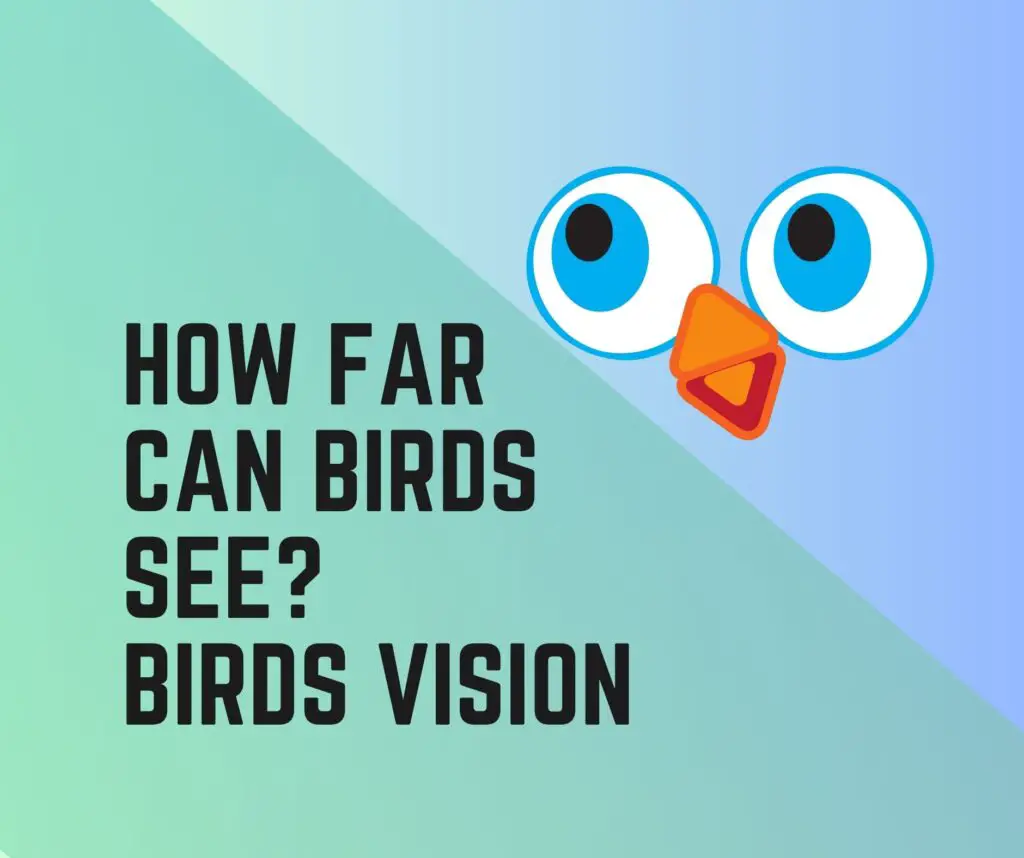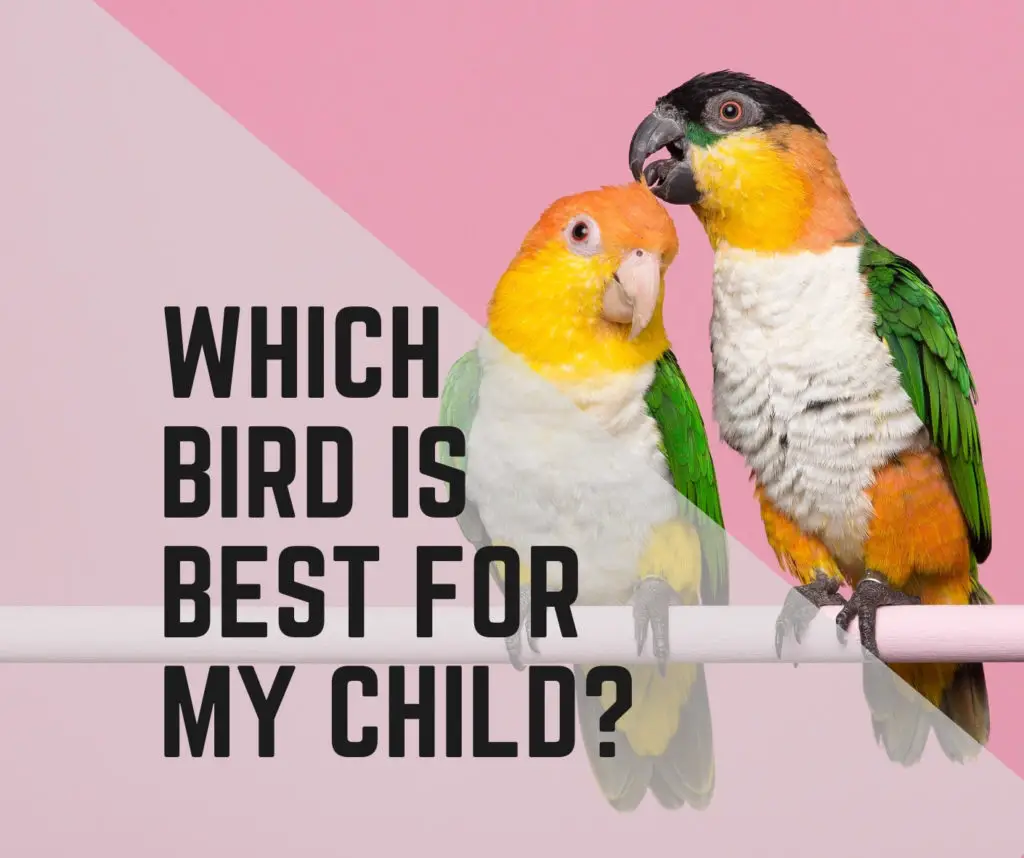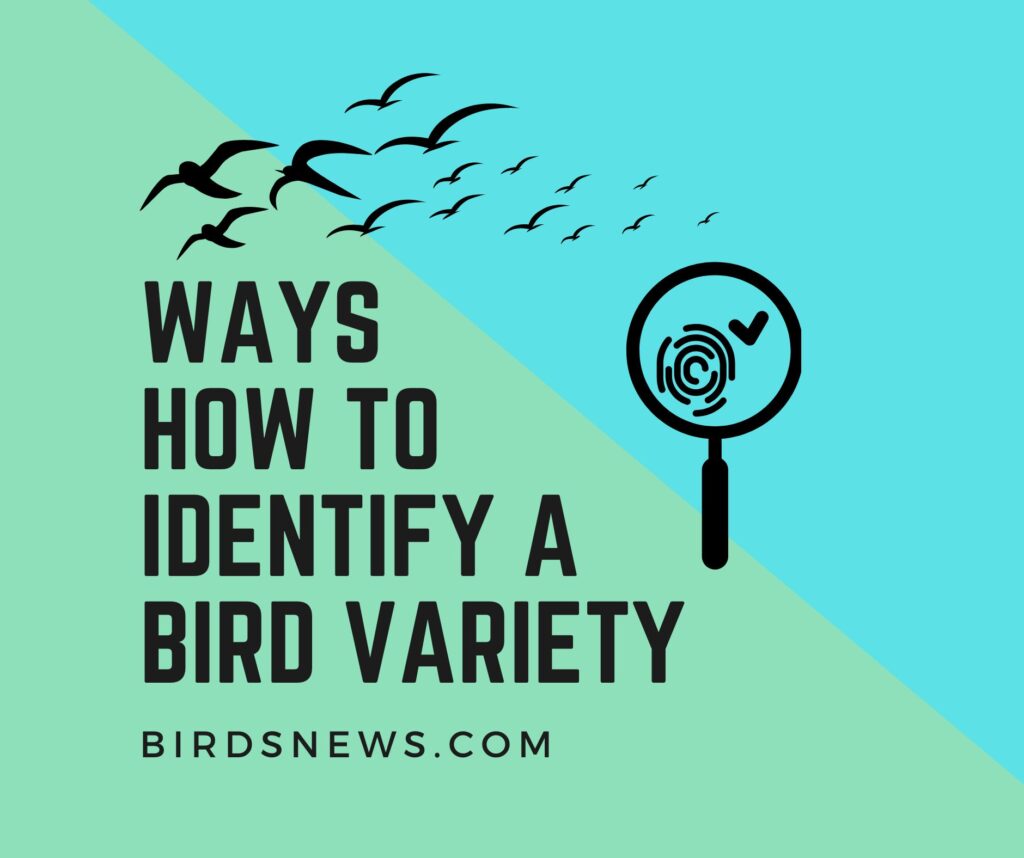Do you know why birds are so celebrated? For their extraordinary visual abilities. Back in the time when science wasn’t scientific research, and injuries weren’t a thing, birds’ eyesight was still described as “Hawk-eyed.” The expressions were coined to describe those with a sharp knack for perceiving distant vistas.
So forever, it is well known that birds can see far away, all thanks to their vision range. However, the question is, “How Far Can Birds See?”.
Join us in this article as we explore the Vision Range of Birds. Comprehending their varying visual capacities enriches our bond with birds. From majestic eagles gracing open skies to unassuming chickens treading the earth, we’ll navigate the array of visual proficiency that each feathered creature possesses.
Birds proudly showcase their power in long-range vision, though the extent is nuanced by species and activities. Some North American birds excel at detecting objects nearly 2 miles away, while predatory raptors like eagles exhibit the exceptional ability to spot minuscule quarry from distances exceeding 3 miles. Overall, in their aerial realm, birds of prey depend on sighting distant sustenance.
The majority of birds possess laterally placed eyes, bestowing upon them an extensive panoramic outlook, instrumental in both predatory pursuits and evasive strategies. Let’s learn more.
Bird Vision – What Birds See (and you can’t!)
Birds have got exceptional vision, and it is the most important sense for them. Due to a number of adaptations, birds have visual acuity superior to other animals. For their visions, Pigeons are often described as “Two eyes with Wings.” Unlike mammalian eyes, bird eyes typically resemble that of other reptiles. Due to the flatter shape (and not spherical), birds can enable more of their visual field into focus.
Bird vision is a fascinating topic that delves into the unique visual abilities of birds compared to humans. Birds have evolved to see the world in ways that are quite different from our own, and their visual adaptations are tailored to their specific needs for survival, finding food, and navigating their environment.
- Color Perception: Birds often have more advanced color vision than humans. While humans have three types of color receptors (cones) that allow us to see a range of colors, many birds have four types of cones, including ultraviolet-sensitive cones. This enables them to see colors beyond the human spectrum, such as ultraviolet markings on flowers or feathers that are used for signaling and mate selection.
- UV Vision: Birds’ ability to see ultraviolet light is a significant advantage in various aspects of their lives. They can detect UV-reflecting patterns on flowers, which guide them to nectar sources that are invisible to us. Additionally, many bird species have UV-reflective plumage patterns that play a crucial role in courtship and mate choice.
- Visual Acuity: Birds have excellent visual acuity, meaning they can see fine details from a distance. Birds of prey, like eagles and hawks, are known for their exceptional vision, which allows them to spot prey from high altitudes.
- Motion Detection: Birds are also highly sensitive to motion, allowing them to quickly detect even slight movements of potential threats or prey. This ability is vital for survival in the wild.
- Depth Perception: The positioning of a bird’s eyes on the sides of its head gives it a wide field of view, allowing for excellent depth perception. This is crucial for activities like flying and landing accurately.
- Tetrachromatic Vision: As mentioned earlier, many birds have four types of color receptors (tetrachromatic vision) compared to our trichromatic vision. This gives them the ability to discriminate between colors that appear identical to humans.
- Polarized Light Detection: Some birds can detect polarized light patterns in the sky. This ability helps them navigate and orient themselves accurately during migration.
- Nocturnal Vision: Owls and some other nocturnal birds possess adaptations for seeing in low-light conditions. Specialized retinas and a high density of rod cells enable them to see in dim light, making them proficient hunters during the night.
- Flicker Fusion Frequency: Birds often have a higher flicker fusion frequency than humans, which means they can perceive rapid movements that appear as a blur to us. This is particularly useful for birds that engage in fast aerial maneuvers.
- Nictitating Membrane: Birds have a third eyelid called a nictitating membrane that protects their eyes and keeps them moist while allowing them to see. This membrane is translucent and can be drawn across the eye in a fraction of a second.
How Far Can Birds See?
Birds can see really far, more than we humans can just imagine. Birds are known for their remarkable range of visual acuity, and that’s what helps them in surviving. Their ability to see, however, can vary depending on the individual, age, and species.
Birds are naturally blessed with such incredible vision for several roles. Their vision helps them in foraging, predator evasion, and navigating their environment. While specific distances may vary, certain general trends can be observed.
Birds like Hawks, Falcons, and Eagles have exceptional long-distance vision. These birds have high-density receptors that allow them to spot even the smallest prey from miles away. Eagles have such sharp eyesight that they can spot meals from over 3 miles of distance.
Similarly, Shorebirds and Waterfowls also have impressive vision. Their eyesight allows them to locate food sources easily, even in vast landscapes. In fact, some seabirds, including Gulls and Albatrosses, have such specialized vision that they can spot prey even in haze.
Owls and other Nocturnal birds don’t have the sharpest vision but the ability to see in low light conditions. Due to the high density of rod cells in their retinas, they can see in the dark and hunt even by detecting the slightest movement.
Additionally, many birds have a wide field of view due to their laterally positioned eyes. Their panoramic vision allows them to detect prey and predators from different angles. However, the exact distance at which a bird can see depends upon a lot of factors. From their species to specific adaptations, eye size, and habitat, a lot of conditions influence birds’ vision.
15 Different Birds and Their Vision Range
- Eagles are popular for their keen eyesight. These birds have high receptor density and can spot prey and predators from over 3 miles of distance.
- Falcons have incredible vision, and they can spot from around 2 miles away. Their vision allows them to target small animals easily.
- Hawks can spot their prey from 1 to 2 miles, all thanks to their impressive binocular vision.
- Owls, the Nocturnal hunters, can detect from distances of about 100-150 feet, even in low light conditions.
- Albatross seabirds can spot in the ocean for a few miles. They can spot fish and potential prey even in hazy conditions.
- Gull, due to their adaptable vision, can spot food and objects from more than a 1-mile distance.
- Pigeon has one of the sharpest eyesight that allows them to spot from several miles away. These birds are known for their homing ability.
- Hummingbirds are known for their excellent color vision. These songbirds can detect vibrant flowers and nectar sources from several yards away.
- Pelicans can detect fish underwater from heights of about 60 feet. Their vision is so sharp that it doesn’t blur off even while in flight.
- Osprey, aka Fish Hawks, can spot fish from high in the sky. Not only that, but they can even dive accurately from 30-40 meters above the water.
- Kiwi, though are flightless birds but can locate insects and worms in the dark forest undergrowth.
- Woodpeckers are known for their acute vision. These birds can spot insects hidden within tree bark from a few meters away.
- Vulture has specialized eyes that help them spot potential food sources from great heights.
- Flamingos are adapted to see underwater and spot organisms even in the mud.
- Due to their incredible vision, Robins can locate earthworms and insects in grassy areas and gardens from several meters away.
Note: These are approximate ranges and can vary based on different factors.
Which Bird Has the Farthest (Sharpest) Eyesight?
Among birds, eagles are known to have some of the farthest and sharpest eyesight. Specifically, the wedge-tailed eagle (Aquila audax) holds the record for having the keenest eyesight of any known bird species.
Eagles are known for their incredible, remarkable visual acuity and eyesight that they can spot from long distances. These raptors can spot small animals, like rabbits, cats, etc., from heights of thousands of feet above the ground.
Due to their exceptional eyesight, Eagles have gained incredible hunting opportunities as well as survival strategies.
Aren’t Hummingbirds the ones with Sharpest Eyesight?
Hummingbirds are known for their excellent color vision, but they do not have the sharpest eyesight. These birds are particularly praised in terms of their color perception and detection of nectar sources. However, in terms of long-range vision or as farthest/ sharpest, they aren’t considered on the top list. Their vision is an adaption to their behavior, like feeding on nectar or hovering on flowers.
When it comes to long-range and acute vision for spotting distant prey or objects, birds of prey like eagles, falcons, and hawks, including the wedge-tailed eagle mentioned earlier, are known to have some of the most remarkable eyesight in the avian world.
Does Birds’ Eyesight get poor with age?
Yes, similar to many animals, birds’ eyesight can deteriorate with age. Just like in humans, birds experience changes in their visual acuity due to aging. In fact, they undergo some common age-related changes that affect their eyesight, including:
- Older birds might experience a decrease in their ability to see fine details and distinguish objects from a distance.
- Like humans, cataracts can develop in birds’ eyes as well, especially as they age. This can lead to clouding of the lens and reduced clarity of vision.
- A condition termed Presbyopia makes birds’ ability to focus on nearby objects diminish with age. Birds might find it harder to focus on close-up objects like food or nests.
- As they grow old, birds can experience changes in their ability to perceive colors. It can further impact their ability to identify certain foods or recognize mates.
- With aging, birds’ retinas can become less sensitive to different levels of light. This can impact their ability to see well in low-light conditions.
Wrapping up…
Overall, birds have a very sharp vision that allows them to see miles away. However, it is important to learn that not all birds have sharp vision.
Every bird species have got a unique eye vision that either allows them to see afar, in low light, spot unique colors, and so on.

Hi, There and Welcome to BirdsNews.com, is here to help you learn and care about pet birds. and this blog is a journal of everything I’ve learned.








